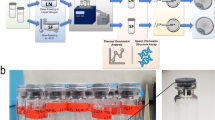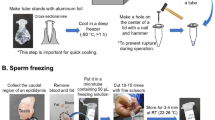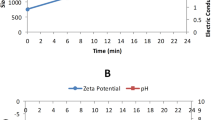Abstract
THE effect on spermatozoa of vitrification at temperatures of –79° C. and below has been studied by several authors. Human spermatozoa appear to be the most resistant ; a substantial proportion may show good motility on thawing after even prolonged vitrification. Revival is far better when semen is frozen in bulk than when minimal amounts in capillary tubes are used1. No explanation of this result is yet forthcoming, but it would appear that rapidity of freezing is less important than the avoidance of surface effects.
Similar content being viewed by others
Article PDF
References
Parkes, A. S., Brit. Med. J., ii, 212 (1945).
Luyet, B. J., and Hodapp, E. L., Proc. Soc. Exp. Biol., N.Y., 39, 433 (1938).
Shaffner, C. S., Henderson, E. W., and Card, C. G., Poult. Sci., 20, 259 (1941).
Shaffner, C. S., Science, 96, 337 (1942).
Author information
Authors and Affiliations
Rights and permissions
About this article
Cite this article
POLGE, C., SMITH, A. & PARKES, A. Revival of Spermatozoa after Vitrification and Dehydration at Low Temperatures. Nature 164, 666 (1949). https://doi.org/10.1038/164666a0
Issue Date:
DOI: https://doi.org/10.1038/164666a0
This article is cited by
-
The UK Crop Microbiome Cryobank: a utility and model for supporting Phytobiomes research
CABI Agriculture and Bioscience (2023)
-
Advanced cryopreservation engineering strategies: the critical step to utilize stem cell products
Cell Regeneration (2023)
-
Cryopreservation of tissues by slow-freezing using an emerging zwitterionic cryoprotectant
Scientific Reports (2023)
-
Bridging polymer chemistry and cryobiology
Polymer Journal (2023)
-
Vitrification and nanowarming enable long-term organ cryopreservation and life-sustaining kidney transplantation in a rat model
Nature Communications (2023)
Comments
By submitting a comment you agree to abide by our Terms and Community Guidelines. If you find something abusive or that does not comply with our terms or guidelines please flag it as inappropriate.



